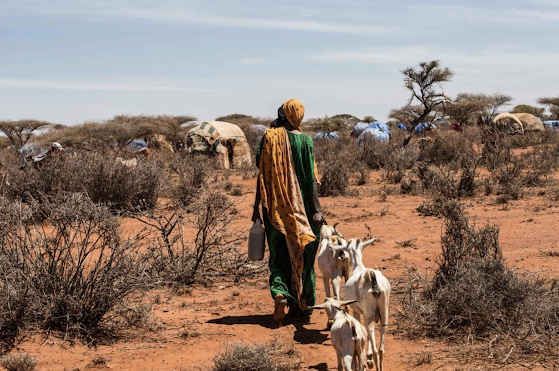Climate Vulnerabilities Amongst Women in Rural Africa
As we have seen from my blog posts so far, climate change and the impact of longer droughts can have a considerable impact on access to water resources across communities in Africa. In particular, if we reflect on the droughts in Cape Town, we saw how vulnerability to climate change can be highly unequal between different members of society. It has been suggested that the most vulnerable groups to these environmental challenges tend to be the poor, the elderly, women and children due to their higher levels of exposure to climatic risks, low adaptive capacity and poor recovery ability (Figure 1) (Niang et al. 2014). Assessing vulnerability to climate change is important as it can help to understand how different aspects of development is impacted across society such as access to water and food security (MacAlister and Subramanyam 2018). However, discussions of climate vulnerabilities across different social, economic and political contexts in Africa are often absent despite such knowledge being able to improve local adaptive capacity (Adger 2006). Therefore, in this post we are going to look at an example of how women in rural communities in Africa are especially vulnerable to global warming and how having this awareness can help inform better climate mitigation strategies.
Figure 1. Increased frequency of heavy flooding events in central Africa means that disadvantaged people living in poorly constructed slum settlements are at higher risk of displacement (BBC 2020).
The main reason women in rural Africa could be especially vulnerable to climate change is due to cultural expectations and gender stereotypes within African communities (UN Food and Agricultural Organisation 2013). Across many parts of rural Africa, the main economic activity that sustains the livelihoods of families is farming (Figure 2) (World Economic Forum 2016). Farming is often carried out jointly by married couples and in most parts of Africa it is rain fed (Arku and Arku 2010). That means during periods of drought, when income from farming tends to go down, both men and women have to diversify their incomes by augmenting farming with other trades (The Conversation 2015). In rural Tsibu-Dafor in Ghana, it was acknowledged that during droughts, women would have to carry out substantially more work than men because on top of farming and additional income generating activities, women would also have to continue taking sole responsibility for reproductive work such as childcare, preparing meals and household upkeep (Arku and Arku 2010). This is because under the traditional gender roles assigned by African customs, it is generally not acceptable for women to ask men to undertake housework (Helman and Ratele 2016). This means that women could be particularly vulnerable to the impacts of longer drought from climate change due to more strenuous workloads that some suggest could have adverse impacts on their physical and mental health (Epstein et al. 2020).
Figure 2. Both men and women participating in farming in rural Africa (World Renew 2020).
On the other hand, men are seen as the household heads in rural African communities meaning it is usually their responsibility to leave the village in search for extra work if income becomes low (Brown 1983). Male-out migration is a common coping strategy in drought years when families can no longer rely on agricultural earnings (Grawert 1992). However, many women in Tsibu-Dafor in Ghana note that financial reliance on men can often leave women more vulnerable during droughts (Arku and Arku 2010). This is because when men migrate for work, they often spend their incomes on new partners they find in the cities and so provide little in the means of money or resources to support their households back home (Arku and Arku 2010). Furthermore, as women have an inferior position in society, their views on these drought mitigation strategies are rarely heard (Ncube et al. 2018). This suggests that women in rural Africa may be particularly vulnerable to global warming as cultural norms could significantly hinder their adaptive capacity during longer droughts.
Overall, I hope this post has shown that understanding the vulnerabilities of different members of society can draw awareness to the shortcomings of current climate mitigation strategies. In fact, given the dependence on rain-fed agriculture, many women in rural Africa suggest that more funds should be allocated to irrigation facilities (Ncube et al. 2018). This may ensure food security, economic stability and an end to male migration during periods of drought. This highlights the importance of challenging gender norms and involving women in decision making in Africa so that more effective and equitable climate adaptions can be sought out.




Comments
Post a Comment